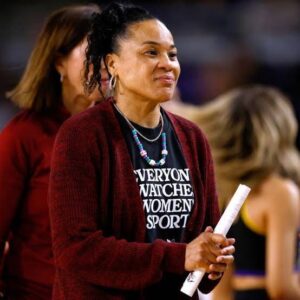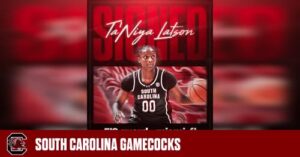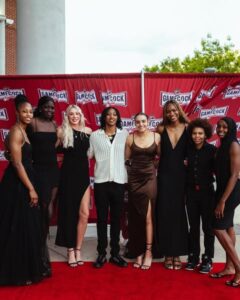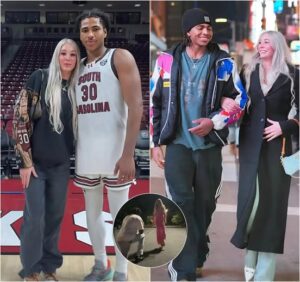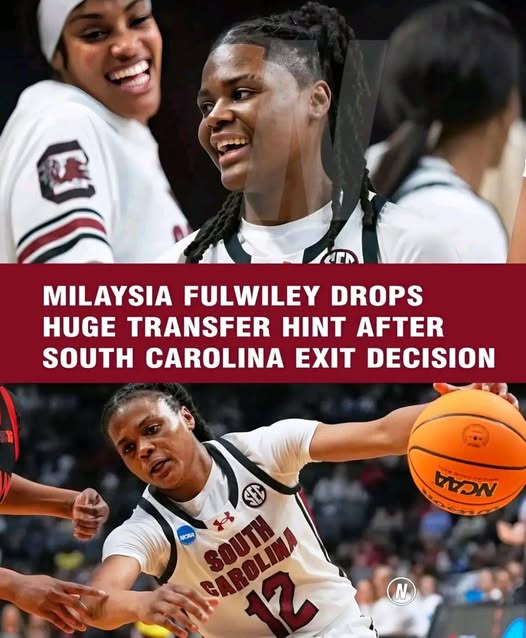
In the world of college basketball, the transfer portal has become one of the most talked-about aspects of player movement, creating waves of speculation, analysis, and uncertainty every year. This season, the news surrounding MiLaysia Fulwiley, the talented South Carolina guard, is making headlines for more than just her departure from the Gamecocks. Fulwiley’s decision to enter the transfer portal with a “do not contact” tag has added a layer of intrigue to her situation, suggesting that her next move is already determined. In this comprehensive piece, we will explore the potential reasons behind Fulwiley’s exit from South Carolina, what the “do not contact” label might mean for her future, and what we can expect from the rising star moving forward.
Who Is MiLaysia Fulwiley?
Before diving into the details of her transfer portal decision, it’s important to understand who MiLaysia Fulwiley is as a player. Fulwiley was a highly regarded recruit, known for her dynamic scoring ability, sharp basketball IQ, and leadership on the court. She played for South Carolina, one of the premier programs in women’s college basketball, led by the legendary head coach Dawn Staley.
Throughout her time with the Gamecocks, Fulwiley demonstrated her versatility as both a scorer and facilitator. Her presence on the floor was felt not only in her ability to break down defenses but also in her playmaking skills, where she often created opportunities for her teammates. A player of her caliber entering the transfer portal naturally raises questions about her reasons for leaving a program as successful as South Carolina, especially after a season where the Gamecocks were once again in the hunt for a national championship.
What Does the “Do Not Contact” Tag Mean?
Typically, when a player enters the transfer portal, they are signaling an openness to exploring other programs. However, the addition of a “do not contact” tag changes the narrative entirely. A “do not contact” tag is a rarity in the world of the transfer portal and is usually a signal that the player already knows where they are going next. This is not just a casual decision but a strategic one, indicating that Fulwiley may have already secured a commitment from another school or has a specific destination in mind.
The “do not contact” label also implies that Fulwiley may want to avoid the typical circus that surrounds the transfer portal. It is not uncommon for players to be inundated with messages, calls, and recruitment pitches from schools across the country once they enter the portal. By placing a “do not contact” restriction, Fulwiley likely wants to streamline the process and avoid distractions. This could also be an indication that her decision is already made and public announcements or official press releases are simply awaiting confirmation.
The Timing of the Transfer Portal Entry
The timing of Fulwiley’s entry into the transfer portal is also telling. Her decision comes at a point in the offseason when many transfers have already been completed, and most high-profile moves have been made. South Carolina’s program, which continues to be one of the best in women’s basketball, has a history of being a high-profile destination for top talent. Yet, despite that, Fulwiley’s departure signals that there may have been factors at play behind the scenes that contributed to her decision to leave.
South Carolina’s basketball program has been in a constant state of change and growth under the guidance of Dawn Staley. While the Gamecocks have been one of the most successful programs in the country over the past decade, it’s possible that the dynamic within the team or coaching staff played a role in Fulwiley’s departure. It’s also worth noting that Staley’s team often attracts a large number of highly talented recruits, which can lead to a competitive environment that may not always align with every player’s personal development or playing time expectations.
Potential Reasons for MiLaysia Fulwiley’s Decision to Leave South Carolina
There are several reasons why a player of Fulwiley’s caliber might leave a powerhouse program like South Carolina, and although only Fulwiley knows the full story, some possibilities include:
- Playing Time and Role Uncertainty: One of the most common reasons for a player to transfer from a school is the lack of a defined role or playing time. Even though Fulwiley was undoubtedly a skilled player, South Carolina’s depth of talent may have created challenges when it came to securing consistent minutes. With so many high-level recruits and established players on the team, Fulwiley may have felt that her growth and development could be better served in a program where she could be the focal point of the offense.
- Program Fit: Another possible reason for her departure could be a mismatch in program fit. South Carolina is known for its defensive-minded, fast-paced, and highly physical style of play. While Fulwiley is a talented player, it’s possible that the style of play did not align with her personal strengths or vision for her future in college basketball. A move to a different program with a more suitable playing style could offer her a better opportunity to thrive.
- Personal or Family Reasons: It’s also worth considering personal or family reasons as a contributing factor to her decision. Athletes often make decisions based on factors outside of just basketball, including proximity to home, family support, or mental health considerations. If Fulwiley felt a need to be closer to home or wanted to take a break from the pressure cooker of elite-level basketball, these could be valid reasons for her decision to enter the portal.
- Strategic Career Move: Finally, it is possible that Fulwiley’s decision is strategic in nature. If she has her sights set on the WNBA or another professional opportunity, she may see her transfer as a necessary step toward putting herself in a better position for future success. Moving to a program that offers a more prominent role or better exposure could be an important part of her long-term career trajectory.
Speculation About Her Next Move
With the “do not contact” tag, it’s clear that Fulwiley has already made her decision about where she’s headed next. While the identity of the team that has secured her commitment remains under wraps, there are a few schools that could be considered potential landing spots for a player of her caliber.
- Top-Tier Programs Looking for a Star Player: Schools with national championship aspirations and a need for a guard of Fulwiley’s skill set could be on the lookout for her talents. Programs like UConn, Stanford, and Notre Dame are known for their elite level of competition and could provide Fulwiley with the platform she needs to take her game to the next level.
- Teams with a Strong Guard Play Tradition: Programs with a history of strong guard play and player development could be another possible fit. Schools like Baylor and Oregon have a track record of developing talented backcourt players and providing them with the opportunity to shine on the national stage.
- Programs Closer to Her Hometown: It’s also worth considering the possibility that Fulwiley may look to transfer to a school closer to her hometown or region. While her home state and roots may not be publicly known, proximity to family or familiar surroundings could be an important factor in her decision.
- Mid-Major Programs with a Growing National Profile: Don’t count out mid-major programs with a rising profile in women’s college basketball. With the continued expansion and development of women’s sports, schools outside of the traditional powerhouses are making waves on the national stage. A program with a unique culture or that offers Fulwiley a chance to be the centerpiece of a team could be a strong contender for her services.
MiLaysia Fulwiley’s decision to enter the transfer portal with a “do not contact” tag is undoubtedly one of the most significant storylines in the world of women’s college basketball this offseason. While the specific reasons for her departure from South Carolina remain unclear, the move is indicative of a player who has a clear vision of her next steps. Whether her transfer is motivated by a desire for more playing time, a better program fit, personal reasons, or a strategic career move, Fulwiley’s decision to leave one of the premier programs in college basketball will have major implications for both her future and the landscape of women’s college basketball.
The fact that she has already made up her mind about her next destination suggests that fans will not have to wait long for a major announcement. Wherever Fulwiley lands, it’s clear that her talent and potential will make her a force to be reckoned with in her next chapter. As the news unfolds, one thing is certain: MiLaysia Fulwiley’s journey in college basketball is far from over, and her next move will certainly be one to watch.
